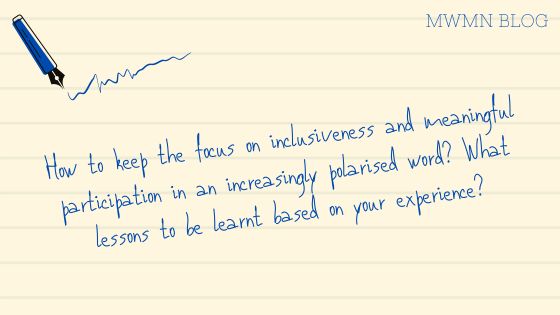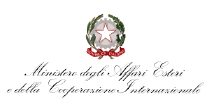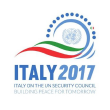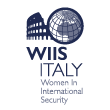The War, or Not, of Words
I have always been very active on social media – Facebook, X 9formerly known as Twitter), Instagram, etc. but it is only after the Israel/Hamas war that started on 7 October 2023 that it really sank in how polarising social media can be and how half-truths, untruths, outright lies, one-sidedness, trolling, labelling, hate speech and putting people down abound in that domain.
And the basis of all this polarisation is the words that are used and how they are used. We all use the same words but do we realise how nuanced, subjective and multidimensional words are, how they can bring people together or push them apart, how they can enlighten or can bring the darkness, how they can heal or hurt? And to give an example of what I mean about how we often use words without really thinking, how often have you used or heard the term “the fight against war”? Read it again and yes, you read/heard it correctly: we are going to stop wars with violence! And that is not the language of peace.
So for me, in order for us to have inclusive and meaningful participation in an increasingly polarised, complicated world, we need to recognise that our words, usually our first and most direct reaction in most situations, need to be carefully chosen.
In the world of mediation where everyone works so hard to bring people together, to find win-win situations, we need to pick our words carefully. We need to learn the language used in international law to bring people together, words that are simple and clear, words that are not offensive or triggers – and many times, that is really hard! So we need to be trained to pause and think before we take a stand, not to decide who is right or who is wrong, but to find where we can see a gap to help those who need the help the most, and to try and de-escalate the conflict using the right words.
And finally, so that I am not misunderstood, I speak humanity, I speak international humanitarian law and I speak ceasefire.
Polarisation: How to ensure inclusiveness
The world is becoming ever more polarised. The animosities between different groups are on the rise while the space for peaceful conversation and understanding is shrinking. Increasingly the “with me or against me” stance is overtaking difficult discussions, creating a perception that human rights values are subordinated to political views, ethnic, religious or even gender divides.
Especially in times of conflict but also in post-conflict environments, this polarisation is more present. Sometimes it creates the feeling that while the war has ended, the divide between different groups is so deep – underscoring the lessons that many of us coming from conflict countries have understood – that peace is not just the absence of war, and building peace is a lasting process.
Polarisation can be exhibited in many shapes and forms; I’ll focus on a few of them.
Polarisation at the top can negatively affect the progress made at the local level by actors including women activists, mediators and NGOs who have tried through hard work and long-time commitment to build bridges of understanding and reconciliation between different groups. It can do so by reinforcing the notion of the other as the enemy and the “need” or the “call” to “regroup” within the “same kind” against the other.
The space for different groups to come together, to act beyond the borders set by their own group, shrinks – while those who dare to act or think outside of the group are portrayed as traitors and at times even physically threatened for taking a courageous action or stance.
Polarisation has different impacts on youth, as it does on women and men ,and even within these groups the effects might differ. Youth, women and men do not represent homogeneous groups, and we tend to forget that.
The young generation born after wars or conflicts have little or no recollection of what has happened. In societies where polarisation between groups is high, younger generations have not experienced meaningful peace, as reconciliation between the groups who were once fighting each other has yet to arrive. Thus, these societies are faced with the danger that conflict is transposed from one generation to the next.
Polarisation exposes the tolerance as well as the commitment for peace within different groups in post-conflict and even conflict societies. We have seen this firsthand in Kosovo, amongst others in the activism of women groups in the 90s where they created their political space and through their agency, they built bridges with women from “the other side”, calling for peace and understanding of each other. Their fight taught us the importance of having women partake in decision-making tables, as did many other women activists worldwide who fought for the protection of human rights across the board. In addition, we understood that participation should go hand in hand with the inclusion of gender perspective, as one does not automatically translate into the other.
Thus, when we take count of the effects caused by polarisation in conflict and post-conflict societies, we understand the high importance of working with groups at the local level, of building bridges of understanding between younger generations and of supporting women activists, mediators and NGOs to pave the difficult path towards meaningful and lasting peace.
Why opting out of dialogue won’t work
An unprecedented number of violent conflicts, such as those in Sudan and Syria, claim hundreds of lives all over the world every day. Yet, an increasingly polarised word is inexorably eroding the space needed to discuss how to end those very conflicts, with political isolation further feeding global and local divides.
Peace mediation and humanitarian aid, instruments that should come in support of broader conflict resolution efforts, share in common the principle of impartiality. However, polarisation has made peace prospects and dialogue a “luxury for few” and it has put humanitarian aid under increasingly untenable strain. In most countries, impartial, neutral and independent humanitarian relief is constantly defending itself from becoming a bargaining chip for bigger political goals of one or the other party to the conflict. Multiple are the examples, especially in complex conflict settings. Food, water and medical support do not enter besieged areas at the time when civilians need it the most, while people with power and guns continue to devastate their communities. Public basic infrastructure, such as hospitals and water networks, targeted by parties to the conflict, are not rehabilitated if controlled by a party to the conflict disliked by donors to the humanitarian response.
While in some contexts, such as Syria, all humanitarian aid delivery modalities across conflict lines were pursued, even though in cross-border arrangements under the cover of UN Security Council Resolutions, in other settings, such as Gaza, not all options have been explored nor yet discussed.
Opting out from humanitarian diplomacy and peace mediation is not an option for the many women across conflict settings committed to finding durable solutions for their respective countries. To achieve this, they are thinking straight and walking their talk, across generations and beyond polarisation. At a time of unprecedented challenges to mediation and dialogue by global polarisation, the effort to include women in negotiating security arrangements in the field must continue. Remote engagement far from the field will not help in understand the root causes of conflicts, nor convince parties to the conflict to stop fighting. New avenues should also be explored, expanding the horizon to the private sector that is acting in support of the humanitarian response and ultimately, in the longer run, the recovery of those countries. Many are the realities where women have become conduits for change in their societies through cooperatives, business initiatives and innovation.
Drawing from their skills, expertise and exposure could act to support women’s inclusion in peace processes, and dialogue efforts more broadly.




